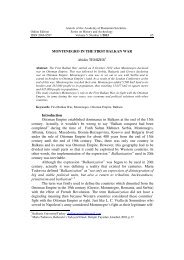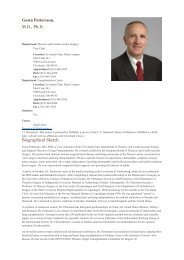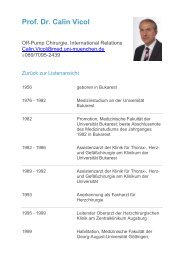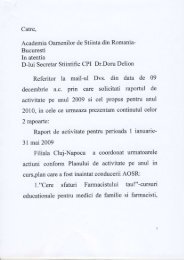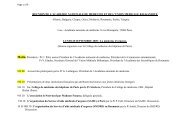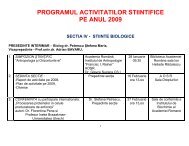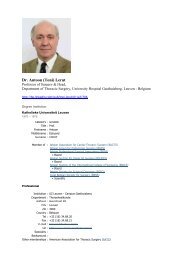Volume 3 nr 1 / 2011 - Academia Oamenilor de Stiinta din Romania
Volume 3 nr 1 / 2011 - Academia Oamenilor de Stiinta din Romania
Volume 3 nr 1 / 2011 - Academia Oamenilor de Stiinta din Romania
- No tags were found...
Create successful ePaper yourself
Turn your PDF publications into a flip-book with our unique Google optimized e-Paper software.
96 Andrei Szu<strong>de</strong>rSpecification of the project indicators will be helpful to consi<strong>de</strong>r the feasibility ofthe project and provi<strong>de</strong> the monitoring and evaluation of the project with valuabletools. We have always to correlate the indicators with the objectives, activities,target group and project resources.An indicator can be <strong>de</strong>fined as an objective measurement to be performed, aresource used, the effect obtained as a quality indicator. An indicator containsquantified information to help stakehol<strong>de</strong>rs assess a project proposal and projectmanagement to communicate, negotiate or make <strong>de</strong>cisions.A good indicator should provi<strong>de</strong> a simple information that can be use andun<strong>de</strong>rstand both who establish the indicator as one who uses it. Indicators <strong>de</strong>scribethe operational and measurable terms (quantity, quality, time) of the projectobjectives. The indicators assess the feasibility of the objectives and results andprovi<strong>de</strong> the basis for monitoring and evaluation system <strong>de</strong>sign.Each indicator must be specific (to measure exactly what he proposes to measure),measured (to be and to be quantified), achievable, relevant. One of the essentialconditions to be met by the indicators is that information resulting from the use of thesame indicators should be the same, whether collected by different individuals [3-5].3. System indicators and project cycleThe indicators should be used at the beginning of the project cycle in the projectinitiation phase to help i<strong>de</strong>ntify areas where Structural Funds can provi<strong>de</strong>financial assistance grant, to analyze the regional context, to diagnose the socialand economic problems and to assess the project needs to respond. At this stage,indicators often play a <strong>de</strong>cisive role to <strong>de</strong>termine whether the proposed project isrelevant and can be successful implemented.Choice and validation of the project intervention strategy is the second stage ofthe project cycle. At this stage, the beneficiary must precisely <strong>de</strong>fine and quantifythe objectives and results. The indicators <strong>de</strong>pend on measuring outcomes and arevery useful for clarifying the objectives.In the implementation phase, the project is monitored and evaluated. At this stage,the indicators are essential to allow the circulation of information in a simple andcon<strong>de</strong>nsed way, both for the internal management of the project as well asbetween the project and the implementing agency.Typically, at this stage, the indicators used to monitor, for example, as the programbaseline is respected, how budgets are spent, the proportion of target group reached,the rate of satisfaction of beneficiaries, the number of jobs created, etc. Projectcycle ends with an ex post or impact phase, which aims primarily to report onprogram outcomes and on the extent to which objectives have been met.Copyright © Editura Aca<strong>de</strong>miei <strong>Oamenilor</strong> <strong>de</strong> Știință <strong>din</strong> România, <strong>2011</strong>Watermark Protected



